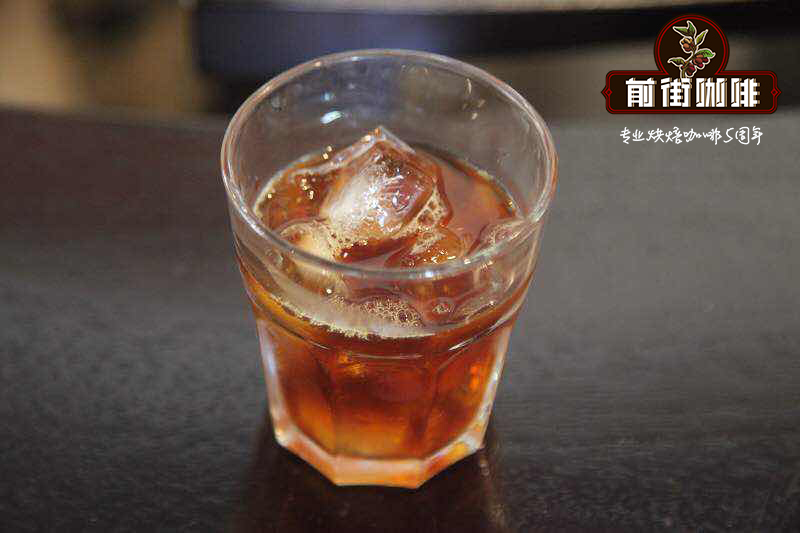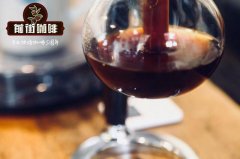Introduction to the characteristics of Honduran barrel fermented coffee whisky barrel fermented coffee beans

Professional coffee knowledge exchange more coffee bean information please follow the coffee workshop (Wechat official account cafe_style)
Brief introduction of Qianjie Honduran whisky barrel fermented Shirley Coffee
Honduras, bordering Guatemala, El Salvador and Nicaragua.
Coffee production was not hot at first until the frost in Brazil in 1975. At that time, Brazil was badly hit and coffee production plummeted, while Honduras took the opportunity to "take the top". Coffee production soared from 500000 bags to 1.8 million bags and was ransacked. It was only after that that coffee production in Honduras really developed.
In recent years, the trend in the coffee industry began to start from the post-processing of raw beans, and developed many new and strange patterns, such as "red wine treatment", "lactic acid fermentation", "double washing", "special strain treatment" and so on. This Honduran-Shirley is also a special post-processing coffee.
Coffee from Honduras used to be rich in sweetness and moderate in taste, but lacks attractive entrance aromas. In order to achieve the entrance aroma, the processing plant began to study ways to increase the aroma, followed by the low-temperature fermentation of this Honduran-Shirley whisky barrel.
The "sherry bucket" is the aged barrel used by the Sherry winery in the whisky industry. All the buckets are stacked according to the vintage, the oldest sherry at the bottom and the youngest sherry at the top. Every year, some of the liquor is extracted from the bottom barrel for bottling and sales, and then the corresponding proportion is extracted from the upper barrel to replenish it, and so on ~ this is what makes sherry unique!
The whisky sherry barrel treatment is to first wash the freshly picked coffee fruit, then put it into a whisky oak barrel ripe into sherry and ferment at a low temperature for 30-40 days (the temperature is about 15-20 ℃), and then dry in the shade.
Country: Honduras
Producing area: Masaguara
Manor: Moca Manor
Altitude: 1500-1700m
Treatment: fine washing whisky barrel fermentation
Variety: mixed species
Flavor: whisky, vanilla, chocolate
END
Important Notice :
前街咖啡 FrontStreet Coffee has moved to new addredd:
FrontStreet Coffee Address: 315,Donghua East Road,GuangZhou
Tel:020 38364473
- Prev

What is the variety of Honduran coffee? a brief introduction to the taste and flavor of Honduran coffee
Professional coffee knowledge exchange more coffee bean information please follow the coffee workshop (Wechat official account cafe_style) the front street of Honduran coffee flavor introduction Honduras has complex terrain and diversified climate. Located in the coastal plain of Central America, it has a tropical rain forest climate, with an average annual temperature of 31 ℃. The mountain belongs to subtropical forest climate, the annual average temperature is 23 ℃, the rainy season is from June to November, and the temperature is mild.
- Next

Introduction to the flavor characteristics of Honduran Shirley whisky coffee
Professional coffee knowledge exchange more coffee bean information please follow the coffee workshop (Wechat official account cafe_style) front street Honduras Shirley hand-made to share the flavor of whisky Shirley barrels, whisky drinkers know that Shirley barrels are the aged oak barrels used by Sherry Winery in the whisky industry. Sherry is
Related
- Beginners will see the "Coffee pull flower" guide!
- What is the difference between ice blog purified milk and ordinary milk coffee?
- Why is the Philippines the largest producer of crops in Liberia?
- For coffee extraction, should the fine powder be retained?
- How does extracted espresso fill pressed powder? How much strength does it take to press the powder?
- How to make jasmine cold extract coffee? Is the jasmine + latte good?
- Will this little toy really make the coffee taste better? How does Lily Drip affect coffee extraction?
- Will the action of slapping the filter cup also affect coffee extraction?
- What's the difference between powder-to-water ratio and powder-to-liquid ratio?
- What is the Ethiopian local species? What does it have to do with Heirloom native species?

